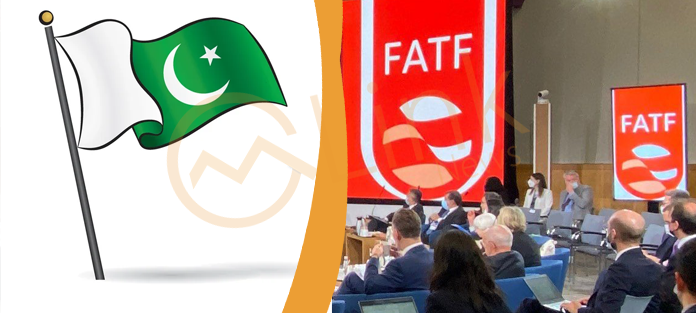By Nilam Bano
October 20, 2022 (MLN): Pakistan has been dealing with the Financial Action Task Force (FATF), a global money laundering and terrorism financing watchdog on the grey list off and on since 2008.
The interaction between both started during the 1990s when the BCCI Bank – an international banking titan founded by Pakistani financier Agha Abedi, was dissolved after the intense lobbying of private American banking interests, wary of a rivaling the Third World.
February 2008:
The first time Pakistan was placed on the FATF grey list was on February 28, 2008, after being failed to take adequate measures to counter anti-money laundering and terror financing.
Pakistan was urged to continue its efforts to improve its AML/CFT laws to come into closer compliance with international AML/CFT standards and to work closely with the Asia Pacific Group (APG).
Since then, Pakistan was on pins and needles there and back again as it was placed on the grey list in 2012 and 2018 also.
June 2010:
Spending over a period of two years on the grey list, the country finally managed to make an exit after demonstrating progress in improving its AML/CFT regime, including enacting a permanent AML law.
However, the FATF had determined that certain strategic AML/CFT deficiencies remain, and Pakistan was asked to work on implementing its action plan to address the same.
February 2012:
On February 16, 2012, Pakistan was once again placed on the unwanted grey list for showing non-compliance with the standards to curb money laundering and terror financing.
FATF noted that Pakistan needs to enact legislation to ensure that it meets the FATF standards regarding terrorist financing offenses and the ability to identify, freeze, and confiscate terrorist assets.
February 2015:
After enduring the implications of being on the grey list, Pakistan was removed from the grey list as it was able to establish a legal and regulatory framework to meet the commitments to the watchdog.
June 2018:
Upon failure to act against terror financing and money laundering, FATF put Pakistan on the grey list to increase monitoring.
On August 16, 2018, after a 12-day inspection, the Paris-based watchdog found deficiencies in Pakistan’s FATF plan.
Since then, Pakistan was being monitored for its commitment to curb terror financing and the government has been on its toes to secure an exit from the grey list. For this reason, the authorities have done all the possible efforts from making bodies at the ministerial level to establishing desks in crucial institutes.
For instance, Pakistan banned outfits labeled as high risk to meet FATF conditions. In addition, Pakistan Customs revised its policies to curb terror financing. FBR establish the FATF cell to deal with money laundering and terror financing.
Against expectations, Pakistan was retained on the grey list on October 29, 2019, urging the country to swiftly complete its full action plan by February 2020.
Later on, in February 2020, FATF decided to maintain Pakistan’s status on the grey list for inadequate control over curbing money laundering and terrorism financing until June 2020 but did not take up Pakistan’s case on the said date.
In its meeting on October 23, 2020, FATF stated that Pakistan complied with 21 out of 27 points of action and hence decided to keep it on the grey list until February 2021.
Little by little, Pakistan was being able to comply with 24 action plans out of 27 by February 2021. Thus, could not take the white chit from the global watchdog.
Meanwhile, money regulators tighten the noose, and FIA and NAB set up a special squad and cell to comply with all conditions.
Up till March 04, 2022, Pakistan was still on the monitoring list.
However, right after the government’s aggressive efforts including sentences for Hafiz Saeed and Sajid Mir, to comply with all the conditions put forth by FATF, the global watchdog on June 17, 2022, found Pakistan compliant with all of the 34 action items assigned and warrant an on-site visit to verify that the implementation of Pakistan’s AML/CFT reforms.
From August 29 to September 2, 2022, a 15-member delegation of FATF and APG paid an onsite visit to Pakistan to verify the country’s compliance with its action plan and held detailed discussions with Pakistani authorities.
The government, then, expressed hope as the visit remained smooth and successful.
Market Reaction:
Throughout the roller coaster journey, the equity and interbank markets remained well aligned to the developments pertaining to Pakistan’s status on FATF’s grey list.
The first time Pakistan was placed on the unwanted list, the benchmark KSE-100 index lost 340 points in three straight sessions, taking the index below the mark of 15000 points, closing at 14739.74 points. Similarly, the local unit came under pressure and saw a depreciation of 33 paisa against the US dollar to take the rupee closer to PKR 63 per USD.
The next time Pakistan was placed on the grey list on February 16, 2012, both markets remained unresponsive as no major crash was observed.
Whereas, after the FATF’s decision on June 28, 2018, to retain Pakistan on the monitoring list, the benchmark KSE-100 index witnessed a colossal loss of over 1700 points in 6 straight sessions, showing investors’ disappointment and lack of confidence in Pakistan’s market. On the other hand, the interbank market posed no major reaction.
For today’s decisions, we see no major change in the rupee’s value as FATF’s positive remarks and a decision will not bring immediate funds. However, in the medium to long run, PKR could remain stable against the US dollar.
Bottomline:
After spending around 52 months in tough luck- known as FATF’s grey list, Pakistan will likely make an exit from the monitoring list after FATF’s October plenary today.
Obviously, it would be a remarkable boost for Pakistan, especially after the country’s sovereign credit rating was downgraded by Moody’s to Caa1 from B3 on increased government liquidity and external vulnerability risks.
Further, the removal from the grey list would accelerate investors’ sentiments pertaining to the investment perspective also at a very crucial moment wherein Pakistan only needs financial support to increase its foreign exchange reserves.
The reputational boost is the only requirement Pakistan needs to unlock its fate at the moment.
*The writer is an Economic/Business journalist at Mettis Global and can be reached at nilambano@mettisglobal.com
Posted on:2022-10-21T16:47:19+05:00
35565




